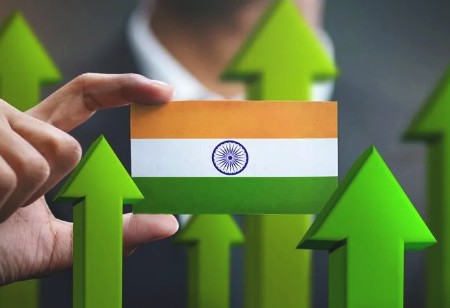
India Expected to Become 5th Largest Economy by 2025 & 3rd Largest By 2030


CEOInsights Team, 0
India currently is the world’s seventh-largest economy. CEBR forecast India’s economy to grow at nine percent in 2021 and seven percent in 2022 but growth will gradually slow as the economy becomes more developed. Of the major economies, the CEBR estimated China’s GDP to fall two percent in 2020 and rise five percent in 2021.
India’s economy had been losing momentum even ahead of the COVID-19 shock. The rate of GDP growth sank to a more than the ten-year low of 4.2 percent in 2019, down from 6.1 percent the previous year and around half the 8.3 percent growth rate recorded in 2016. Slowing growth has been a consequence of a confluence of factors, including fragility in the banking system, adjustment to reforms and deceleration of global trade. “Infrastructure bottlenecks mean that investment in this area has the potential to unlock significant productivity gains. Therefore, the outlook for
CEBR forecast India’s economy to grow at nine percent in 2021 and seven percent in 2022 but growth will gradually slow as the economy becomes more developed
the economy going forward will be closely related to the government’s approach to infrastructure spending,” CEBR said.
The pace of the economic recovery will be inextricably linked to the development of the COVID-19 pandemic, both domestically and internationally. As the manufacturer of the majority of the world’s vaccines and with a 42-year-old vaccination programme that targets 55 million people each year, India is better placed than many other developing countries to roll out the vaccines successfully and efficiently next year, it said.
An important driver of India’s economic recovery thus far has been the agricultural sector, which has been buoyed by a bountiful harvest. “The pace of the economic recovery will be inextricably linked to the development of the COVID-19 pandemic, both domestically and internationally,” it said. In the medium to long term, reforms such as the 2016 demonetization and more recently the controversial efforts to liberalize the agricultural sector, can deliver economic benefits. However, with the majority of the Indian workforce employed in the agricultural sector, the reform process requires a delicate and gradual approach that balances the need for longer-term efficiency gains with the need to support incomes in the short-term. The government’s stimulus spending in response to the COVID-19 crisis has been significantly more restrained than most other large economies, although the debt to GDP ratio did rise to 89 percent in 2020. “The infrastructure bottlenecks that exist in India mean that investment in this area has the potential to unlock significant productivity gains. Therefore, the outlook for the economy going forwards will be closely related to the government’s approach to infrastructure spending,” it added.